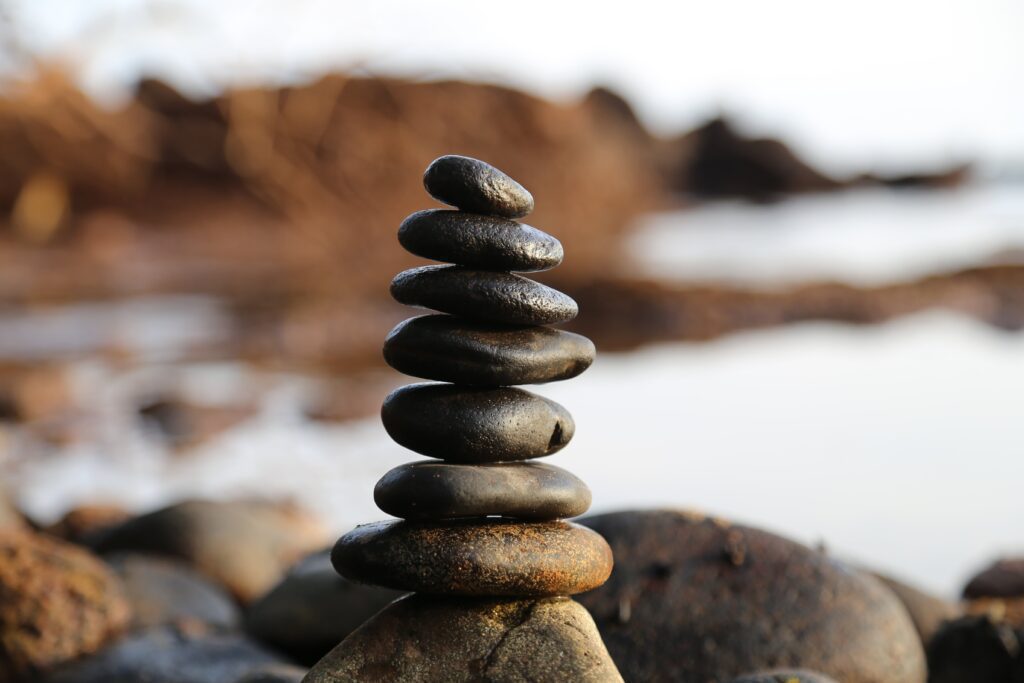Feeling overwhelmed by the daily stresses of life? Look no further than “Zen Living: Proven Techniques for Daily Stress Relief.” This article takes you on a journey towards a calmer and more peaceful existence, sharing effective techniques that have been proven to alleviate stress. From mindful meditation to practicing gratitude, you’ll discover simple yet impactful ways to bring about a sense of balance and serenity in your everyday life. Say goodbye to stress and hello to a more zen way of living.
1. Understanding Zen Living
1.1 What is Zen Living?
Zen Living is a lifestyle rooted in the practice of mindfulness and simplicity. It is a way of life that encourages individuals to cultivate a sense of peace, clarity, and presence in their daily experiences. In essence, Zen Living is about embracing the present moment and finding joy in the simple pleasures of life.
1.2 The Philosophy Behind Zen Living
The philosophy behind Zen Living is deeply rooted in Buddhist teachings, particularly Zen Buddhism. It emphasizes the importance of being fully present and aware in each moment, without judgment or attachment. Zen Living teaches us to let go of excessive material possessions, unnecessary worries, and unproductive thoughts in order to find true contentment and inner peace.
1.3 Benefits of Zen Living
There are numerous benefits to embracing Zen Living in our daily lives. Firstly, it helps to reduce stress and anxiety by promoting mindfulness and a focus on the present moment. By practicing Zen Living, you can cultivate a sense of calm and serenity amidst the chaos of daily life. Additionally, Zen Living encourages a deeper connection with oneself and others, fostering a greater sense of empathy, compassion, and well-being.
1.4 Incorporating Zen Living Into Daily Life
Incorporating Zen Living into your daily life doesn’t have to be a drastic change. It can start with small, mindful practices such as deep breathing exercises, conscious eating, and moments of reflection. Setting aside time for meditation, simplifying your living space, and embracing minimalism are also effective ways to incorporate Zen Living principles into your routine.
2. Practicing Mindfulness
2.1 What is Mindfulness?
Mindfulness is the practice of intentionally paying attention to the present moment with a non-judgmental and accepting attitude. It involves bringing your awareness to your thoughts, feelings, bodily sensations, and the environment around you. By practicing mindfulness, you can cultivate a greater sense of self-awareness and reduce stress and anxiety.
2.2 Mindful Meditation Techniques
One of the most effective ways to cultivate mindfulness is through meditation. Mindful meditation involves focusing your attention on your breath, bodily sensations, or a specific object, while gently bringing your attention back whenever your mind starts to wander. This practice helps to calm the mind, increase concentration, and promote a sense of peace and clarity.
2.3 Mindful Eating
Mindful eating is a practice that involves paying full attention to the experience of eating. It encourages you to savor each bite, notice the flavors and textures, and eat without distractions. By practicing mindful eating, you can develop a healthier relationship with food, listen to your body’s hunger and fullness cues, and make more conscious and nourishing choices.
2.4 Mindful Breathing Exercises
Mindful breathing exercises are simple yet powerful techniques that can be practiced anywhere, anytime. They involve focusing your attention on your breath and observing its natural rhythm. This practice can help to calm the mind, reduce stress, and bring you back to the present moment. Techniques such as deep belly breathing, box breathing, and mindful breathing breaks can be incorporated into your daily routine to promote relaxation and mindfulness.

3. Creating a Calm and Serene Environment
3.1 Simplifying Your Living Space
Creating a calm and serene environment is essential for incorporating Zen Living into your daily life. One way to achieve this is by simplifying your living space. Start by decluttering and getting rid of unnecessary possessions that no longer bring you joy or serve a purpose. Keep your space clean and organized, as a clutter-free environment promotes a clear and focused mind.
3.2 Organizing and Decluttering
Organizing and decluttering go hand in hand with simplifying your living space. Take the time to evaluate your belongings and let go of anything that no longer serves you. Keep only the essentials and find a designated place for each item to maintain a sense of order and simplicity. This will not only create a peaceful and aesthetically pleasing environment but also make it easier to find and appreciate the things that truly matter to you.
3.3 Natural Elements for a Peaceful Atmosphere
Incorporating natural elements into your living space can greatly contribute to a peaceful and serene atmosphere. Bring in plants to add a touch of greenery and improve air quality. Natural materials such as wood, stone, and cotton can create a sense of grounding and connection with nature. Soft, natural lighting and soothing colors can also contribute to a calm and relaxed ambiance.
3.4 Tips for a Tranquil Bedroom
Your bedroom should be a sanctuary for rest and rejuvenation. To create a tranquil bedroom, consider incorporating elements such as a comfortable mattress and bedding, soft lighting, and a clutter-free environment. Remove electronic devices that may disrupt your sleep and create a soothing color palette to promote relaxation. By creating a peaceful bedroom environment, you can enhance the quality of your sleep and wake up feeling refreshed and revitalized.
4. Building Healthy Habits
4.1 Establishing a Daily Routine
Establishing a daily routine is a key aspect of Zen Living. Having a structured routine helps to create a sense of stability and balance in your life. Start by identifying the activities that bring you joy and contribute to your well-being, and incorporate them into your daily schedule. This can include activities such as meditation, exercise, reading, spending time in nature, and engaging in hobbies. By establishing a daily routine that prioritizes self-care and mindfulness, you can experience a greater sense of purpose and fulfillment.
4.2 Prioritizing Self-Care
Taking care of yourself is essential for overall well-being and practicing Zen Living. Make self-care a priority by engaging in activities that promote relaxation, rejuvenation, and personal growth. This can include activities such as taking baths, practicing yoga or tai chi, journaling, engaging in creative pursuits, or simply spending time alone to recharge. Prioritizing self-care allows you to nurture your physical, mental, and emotional health, ultimately leading to a greater sense of balance and contentment.
4.3 Nurturing Relationships
Cultivating meaningful relationships is an integral part of Zen Living. Take the time to connect with the people who matter to you. Practice active listening by fully focusing on the person you are interacting with, without judgment or distractions. Cultivate empathy and compassion in your relationships, putting yourself in the shoes of others and showing genuine care and understanding. By nurturing your relationships and creating meaningful connections, you can deepen your sense of belonging and enrich your overall well-being.
4.4 Cultivating Gratitude
Cultivating gratitude is a powerful practice that can transform your perspective and bring more joy into your life. Take a moment each day to reflect on the things you are grateful for, whether big or small. This can be done through journaling, silently expressing gratitude to yourself, or sharing your gratitude with others. By cultivating gratitude, you shift your focus towards the positive aspects of your life and develop a deeper appreciation for the present moment.

5. Embracing Minimalism
5.1 The Concept of Minimalism
The concept of minimalism is at the core of Zen Living. It involves consciously simplifying your life by letting go of excessive material possessions and focusing on what truly brings value and joy. Minimalism is not about deprivation, but rather about embracing the things that truly matter and letting go of the unnecessary clutter that can weigh us down mentally and emotionally.
5.2 Applying Minimalism to Possessions
Applying minimalism to your possessions involves decluttering and intentionally curating your belongings. Begin by systematically evaluating each item you own and asking yourself if it genuinely serves a purpose or brings you joy. Let go of the items that no longer align with your values or contribute to your sense of well-being. By simplifying your possessions, you create space for what truly matters and experience a greater sense of freedom and clarity.
5.3 Minimalist Wardrobes and Capsule Collections
Creating a minimalist wardrobe or capsule collection involves selecting a limited number of high-quality, versatile pieces that can be mixed and matched. This reduces decision fatigue, simplifies your morning routine, and promotes a sense of personal style. By owning fewer items of clothing that you genuinely love and wear, you can cultivate a sense of ease and confidence in your appearance.
5.4 Simplifying Digital Clutter
In the digital age, it is also important to simplify our digital clutter. Evaluate the apps, files, and emails on your devices and delete or organize them to reduce digital distractions and promote a sense of digital well-being. Create a mindful approach to technology by setting boundaries, such as designated screen-free times or implementing a digital detox. Simplifying your digital life allows you to focus on what truly matters and regain a sense of control over your technology usage.
6. The Power of Nature
6.1 Connecting with Nature
Connecting with nature is a powerful practice that can bring about a sense of calm, peace, and awe. Spend time outdoors and immerse yourself in natural environments such as parks, forests, or bodies of water. Take a walk, observe the beauty of your surroundings, and allow yourself to be fully present in nature. By connecting with nature, you can experience a profound sense of interconnectedness and find solace in the simplicity and beauty of the natural world.
6.2 Forest Bathing
Forest bathing, also known as Shinrin-yoku, is a Japanese practice of immersing oneself in the forest atmosphere. It involves walking mindfully through a forest, engaging your senses, and allowing the healing qualities of nature to nurture your mind, body, and soul. Forest bathing has been scientifically proven to reduce stress, lower blood pressure, and improve overall well-being. By incorporating this practice into your routine, you can experience the therapeutic benefits of nature firsthand.
6.3 Gardening as Therapy
Gardening is not only a rewarding hobby but also a therapeutic practice that enables us to connect with nature and cultivate mindfulness. Taking care of plants allows us to slow down, focus on the present moment, and appreciate the cycles of growth and rejuvenation. Whether you have a small indoor garden or a patch of land outdoors, gardening can provide a sense of fulfillment, relaxation, and connection to the natural world.
6.4 Outdoor Meditation
Meditation can be practiced anywhere, including outdoors. Find a peaceful spot in nature, whether it’s under a tree, by a river, or on a hilltop, and allow yourself to be fully present in the natural environment. Use the sounds, smells, and sights of nature as anchors for your meditation practice. By meditating outdoors, you can deepen your connection with nature and access a state of calm and stillness that can be truly transformative.

7. Cultivating Mindful Relationships
7.1 Active Listening
Active listening is a fundamental skill in cultivating mindful relationships. It involves fully focusing on the person speaking, without interrupting or formulating a response. Give your undivided attention, maintain eye contact, and practice empathy by putting yourself in the speaker’s shoes. By being present and actively listening, you can deepen your connections, foster understanding, and cultivate a sense of compassion and respect in your relationships.
7.2 Compassionate Communication
Compassionate communication, also known as nonviolent communication, is a powerful tool for cultivating mindful relationships. It involves expressing yourself honestly and authentically while remaining empathetic and compassionate towards others. Practice using “I” statements to express your feelings and needs, listen nonjudgmentally to the perspectives of others, and seek common ground. By cultivating compassionate communication, you can create a safe and supportive space for open and honest dialogue.
7.3 Being Present in Relationships
Being fully present in your relationships is essential for cultivating mindful connections. Put away distractions such as phones or other devices and give your complete attention to the person you are with. Engage in meaningful conversations, ask open-ended questions, and show genuine interest in the experiences and thoughts of others. By being present in your relationships, you can deepen your connections, foster mutual understanding, and enhance the quality of your interactions.
7.4 Cultivating Empathy
Empathy is the ability to understand and share the feelings of others. Cultivating empathy is crucial for fostering mindful relationships. Practice stepping into someone else’s shoes, suspending judgment, and truly listening to their experiences and emotions. Empathy creates a powerful connection between individuals, allowing for deeper understanding, compassion, and support. By cultivating empathy in your relationships, you can create a sense of belonging, promote emotional well-being, and foster harmonious connections with others.
8. Finding Joy in Simple Pleasures
8.1 Enjoying the Present Moment
Finding joy in the present moment is a key practice in Zen Living. Learn to appreciate the small things in life, such as sipping a cup of tea, feeling the warmth of the sun on your skin, or savoring a delicious meal. Practice mindfulness by fully engaging your senses and truly experiencing each moment as it unfolds. By finding joy in the present moment, you can cultivate a greater sense of gratitude and contentment in your daily life.
8.2 Engaging the Senses
Engaging your senses is a powerful way to immerse yourself in the present moment and find joy in simple pleasures. Pay attention to the sights, sounds, smells, tastes, and textures of your surroundings. Take a moment to truly savor the aroma of a flower, listen to the soothing sounds of nature, or appreciate the delicate flavors of a meal. By engaging your senses, you can heighten your awareness and create opportunities for moments of joy and wonder.
8.3 Finding Beauty in Everyday Life
Beauty can be found in the simplest of things. Take the time to notice and appreciate the beauty that surrounds you every day. It can be the vibrant colors of a sunset, the intricate patterns of a flower, or the laughter of a loved one. By consciously seeking out and acknowledging the beauty in everyday life, you can cultivate a greater sense of awe, gratitude, and joy.
8.4 Practicing Gratitude for Small Things
Practicing gratitude for the small things is a transformative practice that can shift your perspective and enhance your well-being. Take a few moments each day to reflect on the things you are grateful for, whether it be a kind gesture from a stranger or a moment of peace and stillness. By expressing gratitude for the small things, you redirect your focus towards positivity, increase your overall happiness, and cultivate a sense of abundance in your life.

9. Releasing Stress through Physical Activities
9.1 Yoga and Tai Chi
Yoga and Tai Chi are ancient practices that combine physical movement, breathwork, and mindfulness. Both practices help to release stress, increase flexibility and strength, and promote a sense of balance and harmony. Whether you prefer the dynamic sequences of yoga or the slow, flowing movements of Tai Chi, incorporating these practices into your routine can provide not only physical benefits but also mental and emotional well-being.
9.2 Mindful Walking and Running
Walking and running can be transformed into mindful practices by bringing your attention fully to the sensations and rhythm of your movements. When you walk or run mindfully, focus on the sensations in your feet, the rhythm of your breath, and the sights and sounds around you. By paying attention to the present moment, you can experience a sense of grounding, release tension, and rejuvenate your mind and body.
9.3 Dance and Movement Therapy
Dance and movement therapy offer a unique way to release stress and explore your emotions through movement. Engaging in free-form dance or structured movement exercises allows you to express yourself authentically, release tension, and connect with your body. By moving mindfully and allowing your body to express itself, you can relieve stress, enhance self-awareness, and promote emotional well-being.
9.4 Relaxing with Gentle Stretching
Gentle stretching exercises, such as yoga-inspired stretches or simple mobility exercises, can help release tension and promote relaxation. Take a few minutes each day to stretch your body, focusing on areas that tend to hold tension, such as the neck, shoulders, and lower back. As you stretch, pay attention to the sensations in your body and breathe deeply. Gentle stretching can help to alleviate physical discomfort, promote greater flexibility, and create a sense of ease and calm.
10. Inner Reflection and Challenging Thoughts
10.1 Journaling for Self-Reflection
Journaling is a powerful tool for self-reflection and gaining insight into your thoughts and emotions. Set aside time each day or week to write freely about your experiences, thoughts, and feelings. Use writing prompts or prompts related to your personal growth journey. By journaling, you can gain clarity, process emotions, and learn more about yourself. Journaling can also serve as a way to release any negative or limiting thoughts, and to document moments of gratitude and joy.
10.2 Questioning Limiting Beliefs
We all carry limiting beliefs that hold us back from reaching our full potential. Engaging in self-inquiry and questioning these beliefs is an important part of personal growth and embracing Zen Living. Identify the limiting beliefs that might be affecting your thoughts, actions, or decisions. Ask yourself if these beliefs are true or if they are holding you back from living a more fulfilling life. Through reflection and challenging these beliefs, you can open yourself up to new possibilities and cultivate a greater sense of self-empowerment.

10.3 Embracing Imperfection
Embracing imperfection is a fundamental aspect of Zen Living. We often strive for perfection, which can lead to stress, anxiety, and self-judgment. Instead, recognize and accept that imperfection is a natural part of life. Embrace the beauty of flaws, mistakes, and failures, as they offer opportunities for growth, learning, and self-discovery. By embracing imperfection, you can release the burden of unrealistic expectations and find joy in the journey, rather than solely focusing on the outcome.
10.4 Letting Go of Negative Thoughts
Negative thoughts can be a source of stress and unhappiness. Practicing mindfulness and self-awareness can help you become more attuned to negative thoughts and emotions as they arise. When negative thoughts arise, do not judge or suppress them, but instead, observe them with a sense of curiosity and non-attachment. Allow the negative thoughts to pass without clinging to them. Practice letting go of negative thoughts and reframe them with positive or neutral alternatives. By letting go of negative thoughts, you create space for more positive and uplifting experiences in your life.
Zen Living: Proven Techniques For Daily Stress Relief
Incorporating Zen Living techniques into your daily life can have a profound impact on your overall well-being and ability to manage stress. By cultivating mindfulness, simplifying your environment, building healthy habits, embracing minimalism, connecting with nature, nurturing relationships, finding joy in simple pleasures, engaging in physical activities, and practicing inner reflection, you can create a life that is more peaceful, meaningful, and aligned with your true values. So, take a deep breath, embrace the present moment, and embark on a journey of Zen Living for a happier, more fulfilled life.